From Debt to Freedom: Strategies to pay off debt faster
Even when money is tight, you can still take charge of your debts. The key is finding a payment and negotiation strategy that feels right.
Discover your path to financial freedom!
There are countless ways to tackle your debts, but the real challenge lies in figuring out which approach works best for you.

Remember, getting out of debt is definitely possible, and the most effective plan will match your unique situation—your debts and your income.
If your debts aren’t completely overwhelming your budget, you might want to start by knocking out the smallest balances first while keeping a close eye on your spending.
But if you’re buried under a mountain of debt, it might be time to explore ways to boost your income, consolidate your debts, or look into financial assistance options.
Get a clear picture of your finances
First things first—understanding how much you owe is crucial.
It might feel daunting to face those numbers, but knowing where you stand financially will make planning your next steps easier.
Start by writing down all your debts—both revolving debts (like credit card balances) and installment loans (like mortgages or car loans)—and jot down the amounts.
This will help you see the full picture of what you owe.
Assess how your debt compares to your income
The best way to tackle your debts depends on how they stack up against your income.
If it feels like a lot to manage, you might want to consider options like a debt management plan instead of trying to handle it all alone.
Trim down on unnecessary spending
With a realistic budget in hand, take a hard look at where your money is going. Break your spending into “needs” and “wants,” and start cutting back on the non-essential items.
While it’s important to allow a little room for fun, reducing unnecessary expenses is key to getting out of debt.
Prioritize high-interest debts
One effective strategy is known as the “debt avalanche.” This method focuses on paying off debts with the highest interest rates first.
By making minimum payments on your other debts, you’ll save money over time by knocking out the most expensive ones faster.
Review your monthly expenses
Take a moment to sort through your monthly spending in categories like food, transportation, housing, and entertainment.
Your credit card statements can be super helpful here since they often break down your spending.
Once you identify areas where you can cut back, redirect those savings toward paying down your debts.
Choose your payment strategy
Now that you have a clearer understanding of your finances, it’s time to decide how to use any extra income to chip away at your debts.
Two popular methods to consider are the snowball and avalanche approaches.
Snowball Method
With this strategy, you make minimum payments on all your debts but focus any extra cash on the smallest debt first.
Once you pay that off, you move on to the next smallest one. This method can give you quick wins that keep your motivation high as you eliminate debts one by one.
Avalanche Method
Alternatively, you can tackle the debt with the highest interest rate first. After clearing that debt, you move on to the next one with the highest rate.
This strategy can save you money by prioritizing high-interest debts, though it may require more patience, especially if the highest-interest debt is also the largest.
Additional Strategies to Accelerate Debt Repayment
Beyond managing your spending and choosing a repayment strategy, here are some extra tips to help you pay off your debts faster:
Look into Debt Consolidation
This option involves combining multiple debts into a single loan, making it easier to manage your payments by dealing with just one lender.
Sell Unused Items
Selling things you no longer need can also bring in some extra money.
Use platforms like Facebook Marketplace or eBay to clear out your space and generate cash for your debt repayment.
Consider a Side Job
Picking up a part-time gig can provide some extra cash to help you settle your debts more quickly.
You could work extra hours, take on delivery jobs, walk dogs, babysit, or drive for a rideshare service.
If you found these tips helpful and want to dive deeper into managing your finances, check out this article on the pros and cons of balance transfers.






